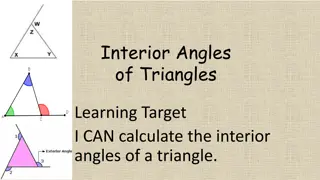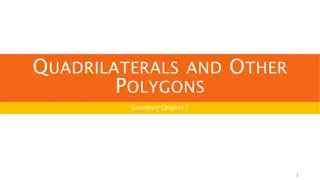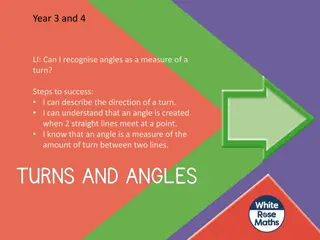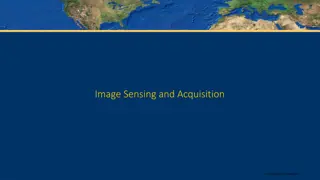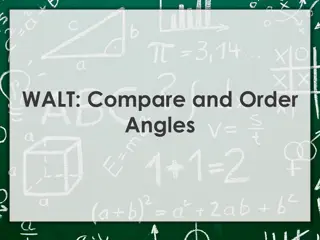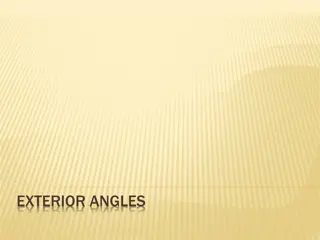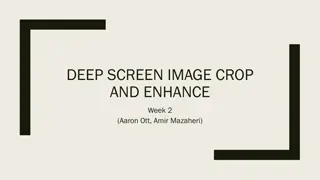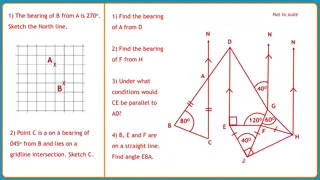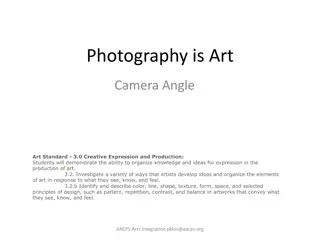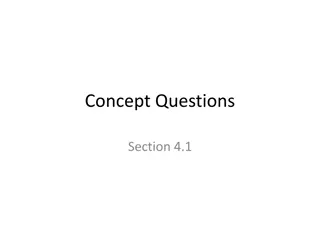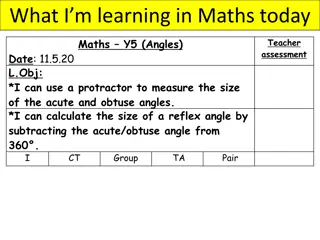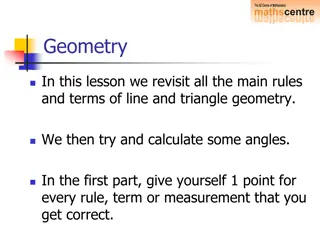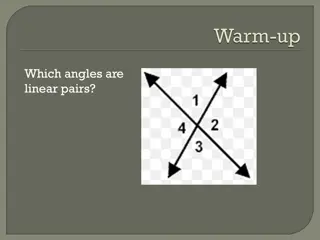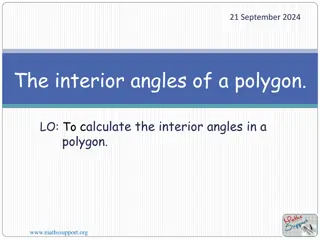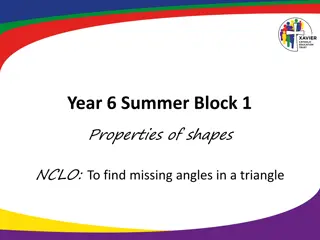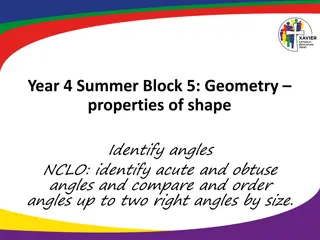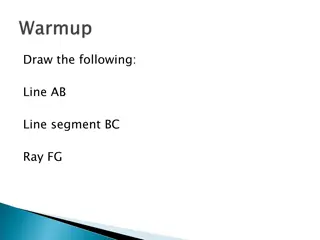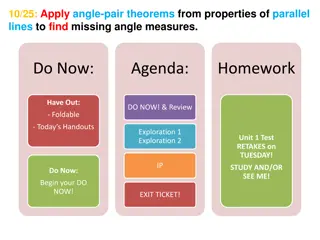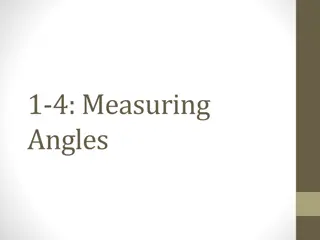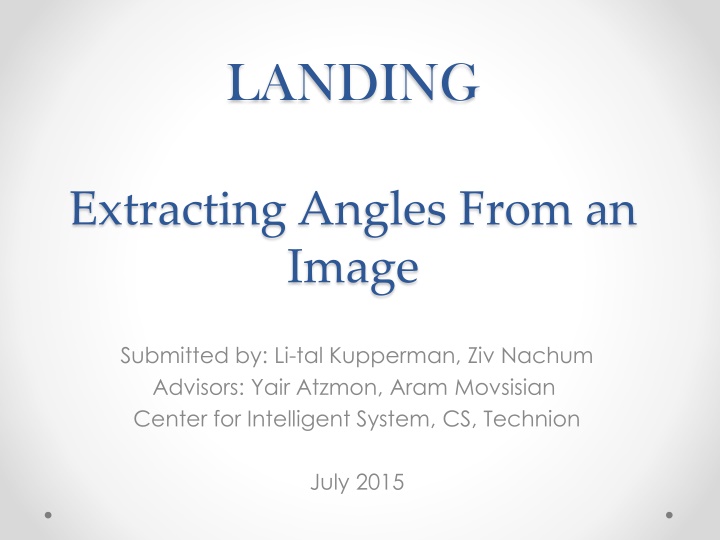
Extracting Angles from Image for Quadcopter Landing
"Discover the process of extracting angles from images to enhance quadcopter landing accuracy. Explore methods, challenges, and solutions in this innovative project at Technion's Center for Intelligent Systems."
Download Presentation

Please find below an Image/Link to download the presentation.
The content on the website is provided AS IS for your information and personal use only. It may not be sold, licensed, or shared on other websites without obtaining consent from the author. If you encounter any issues during the download, it is possible that the publisher has removed the file from their server.
You are allowed to download the files provided on this website for personal or commercial use, subject to the condition that they are used lawfully. All files are the property of their respective owners.
The content on the website is provided AS IS for your information and personal use only. It may not be sold, licensed, or shared on other websites without obtaining consent from the author.
E N D
Presentation Transcript
LANDING Extracting Angles From an Image Submitted by: Li-tal Kupperman, Ziv Nachum Advisors: Yair Atzmon, Aram Movsisian Center for Intelligent System, CS, Technion July 2015
The Main Goal The Main Goal The Master project: o Land a quadcopter on a moving target Our part: o Extract angles from an image o Using data from image stream
Recognizing Recognizing the the target target Hough Transform o First (unsuccessful) trial o Unable to detect ellipses only rounded circles.
Recognizing Recognizing the the target target Detection Heuristics o Comparing areas of ellipses and corresponding rectangles. o Acquire a set of different ellipses. (no repetitions) o Choosing only the relevant ellipses, according to our target.
Choosing the Choosing the target target First Target o Problem: Difficult to distinct the actual target from other objects. o Apparently not as unique as we thought
Choosing the Choosing the target target Second Target o Looking for 6 circles, in a certain formation. o Easier to detect o Problem: The target is too symmetrical. o Unable to decide on the direction the camera was facing. o Unstable results.
Choosing the Choosing the target target Final Target o Looking for 7 circles, in a certain formation. o Easier to detect o The extra circle allows to decide on a specific order. o Led to stabilized results. o Matches the direction of the camera in the real world.
Extracting The Angles Extracting The Angles Using two sets of points: 1. Points in the 2D image plane Ellipses in the frame 2. Points in the real 3D world The real target
Extracting The Angles Extracting The Angles Using Perspective-n-Points: o Estimate camera pose from given n 3D points and their projection in an image. o solvePnP function. o Output: Rotation vector Translation vector o Represents the position on the camera with regards to the real world
Extracting The Angles Extracting The Angles Converting the rotation vector, into a rotation matrix o Rodrigues function Easier to calculate the angles from a matrix. Extracting the angles using a given calculation o As shown in the next slide
Extracting The Angles Extracting The Angles ?00 ?10 ?20 ?01 ?11 ?21 ?02 ?12 ?22 ? = ?1= ????2 ?12,?22 2+ ?01 2 ?2= ?00 ?2= ????2( ?02,?2) ?1= sin ?1 ?1= cos(?1) ?3= ????2(?1?20 ?1?10,?1?11 ?1?21)
Final Results Final Results 3 angles, representing 3 axes. Final results displayed in degrees. Using there 3 angles it is possible to determine the quadcopter s next move towards the target
Examples Examples X: 17.4068, Y:6.23963, Z:-80.3897
Examples Examples X: 25.249, Y:-8.4599, Z:57.6348
Examples Examples X: 72.1469, Y:-2.32951, Z:-115.046

